White Crane, Old Dog, Fading Memory
Documentation
Project Description
The project is a tribute to my great grandmother in the form of a live cinema performance. It is a re-telling of her life story through my reflection. By bring her singing from almost twenty years ago in conjunction with my family archival footage and my photography, I wish to remember and celebrate her by sharing her story.
The title – White Crane, Old Dog, Fading Memory has its own connotation. “white crane by the lake” is a repeating theme/metaphor in the folk music of Nakhi, “old dog” is literally what I saw a lot in the village where my great grandmother used to live. There were old dogs wandering around in the village that made me think about the passage of time.
Perspective and Context
I was greatly inspired by the Light Surgeons, which is a London-based live cinema performance collective. True Fictions was one of the projects dated back a decade ago. It investigates the concept of myth, cinema, and American history. I was intrigued by the story just by the trailer on Vimeo. The amateur aesthetics, music score, and the editing have together created a power arrangement of media and deeply engaging emotion. I can’t imagine how sensory and breath-taking the performance was when they play the music score live.
From their work, I became fascinated by live cinema as an art form and personal expression.
Gabriel Menotti says in Live Cinema, that live cinema has the potential to challenge the storytelling strategies in traditional theater-based or screen-based cinema. Or to say, to mythicize the content by the multi-sensory input and the fluidity of visual arrangement and music-making. “Such extensive freedom of configuration favors works whose evocative structure is closer to poetry than to the prosaic linearity that distinguishes most movie genres, thus suggesting improvised, free-flowing abstractions” (Menotti 86). The “poetic” aspect of live cinema, loosely structured, widely sourced can be coherent by the magic of music, if edited or lively-controlled properly.
In addition, another aspect of live cinema that I am interested in is the creator/artist’s way of interaction with the audience. “The light projected onto the screen is like a campfire around which the public gathers to absorb the performer’s tales. The performer is an actor whose main job would be to pursue communication through this process, keeping it meaningful for the audience” (Menotti 88).
The presence and visibility of the “director” can be regarded as a powerful statement to understand what he/she has to say. The after-party and mingle with the audience also are part of the feedback for both sides – the audience and the director.
Development & Technical Implementation
Link https://gist.github.com/Amber-yutong-lin/28f089eab4176af7fb426653268958a8
Since my direction is slightly diverged from what other people were doing, my workflow was also a little different.
Step #1 – music composition:
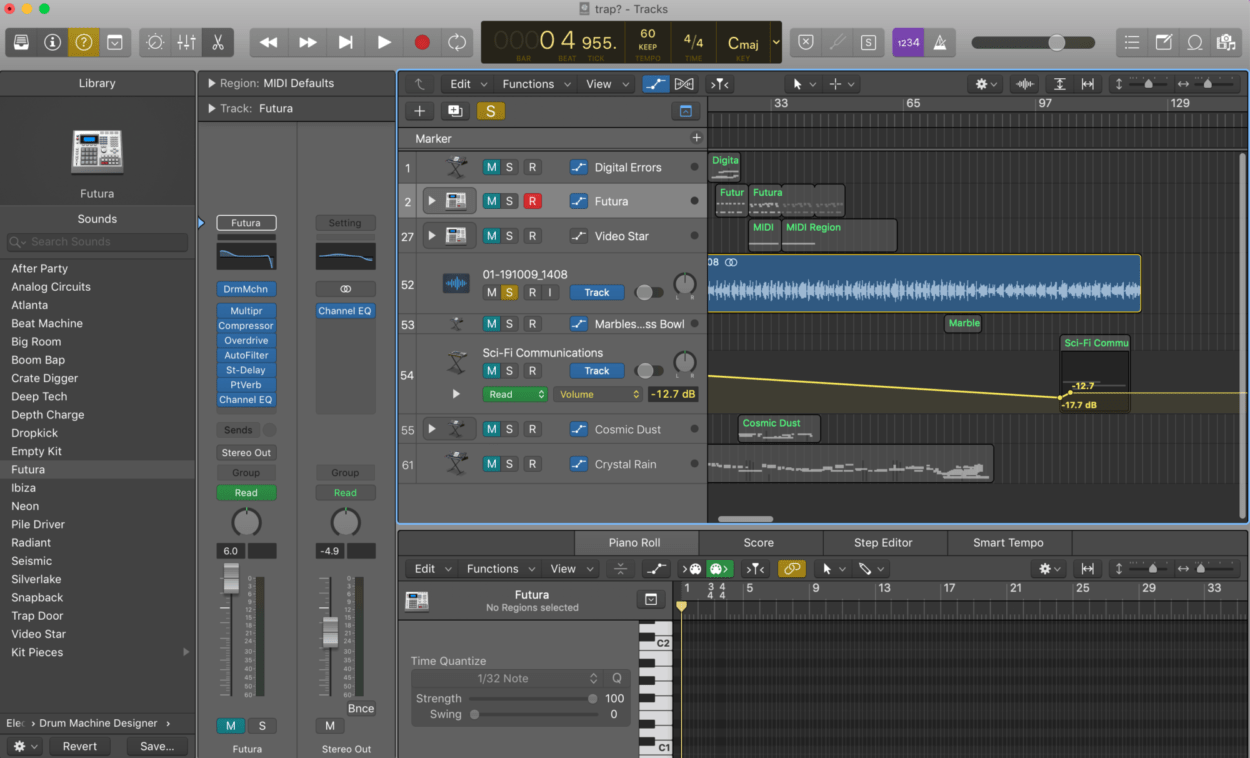
I composed my music in Logic Pro. It was my first time using it. I was sampling drum sequences from GarageBand and Eric suggested that too much sampling may result in a generic output and lack of personality, especially for those who are familiar with either GarageBand or Logic. Therefore, I recomposed a more futuristic and ambient layer that goes well with my great grandmother’s folk singing.
(The drum sequence was made by my friend – Fiona Chen with her consent to use.)
Step #2 – scriptwriting and transcription:
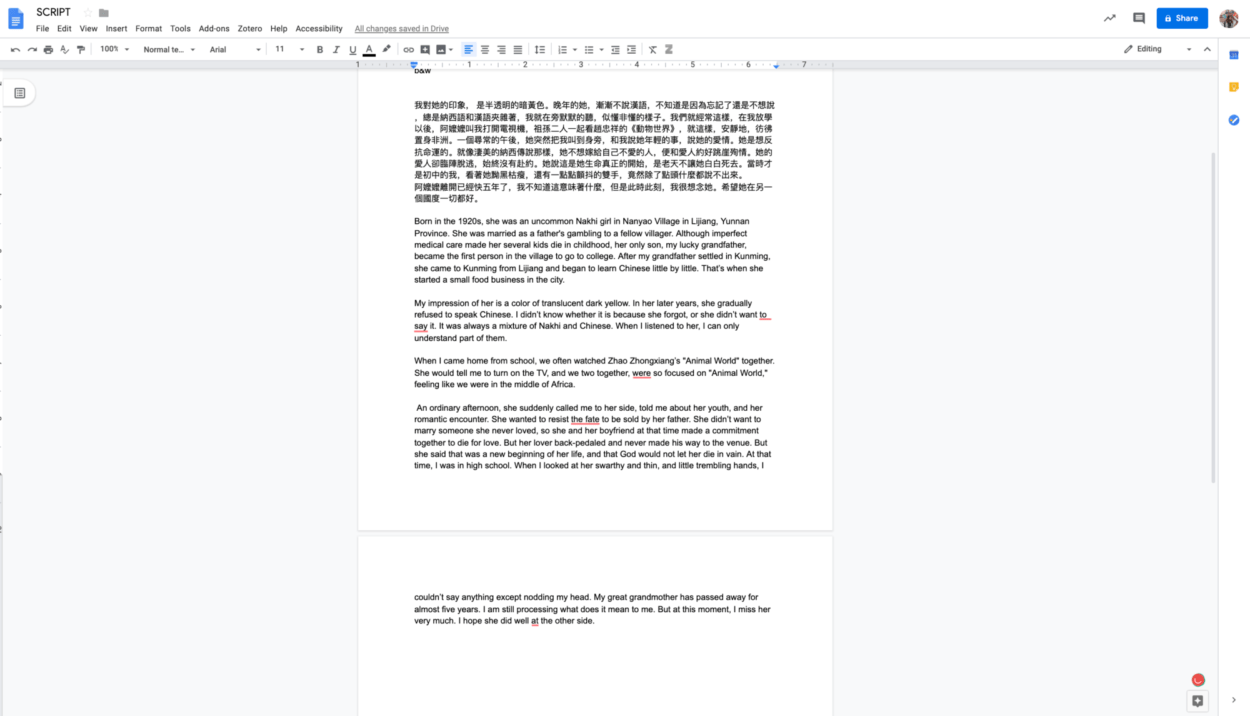
I wrote a short prose of my memory of her when I was younger.
Step #2 – text, image, and video curation
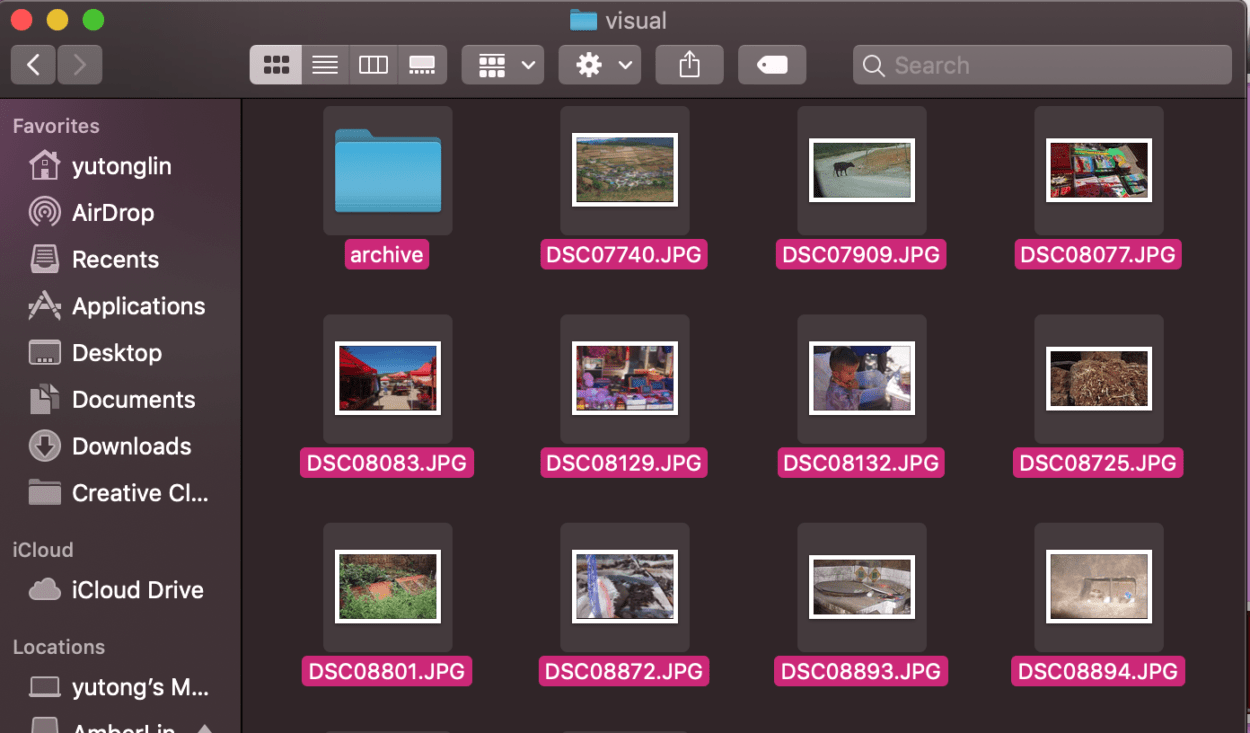 I chose the visual materials based on the script. The selection began even earlier when I was reviewing my previous photograph and family footage.
I chose the visual materials based on the script. The selection began even earlier when I was reviewing my previous photograph and family footage.
Step #3 – pre-compositing and visual effects
This step is done in C4D, Max, and Aftereffects.
Step #4 – move to Max for live performance
The live visual elements are mainly controlled by MUTIL8R and HUSALIR for saturation, contrast, and hue. By altering the black and white only images to the highly contrasted ones, I wish to visualize the color of memory, the hyperreality in nature of cinema.

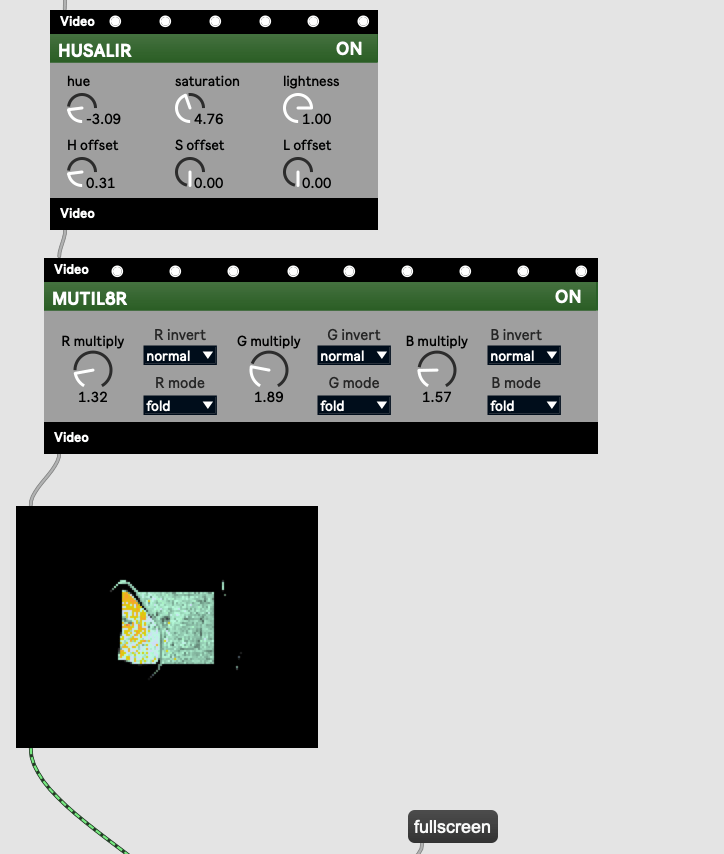 The audio effects are played live. The reverb, echoing, and filters are rehearsed to fit the visual and the grand layer of music.
The audio effects are played live. The reverb, echoing, and filters are rehearsed to fit the visual and the grand layer of music.
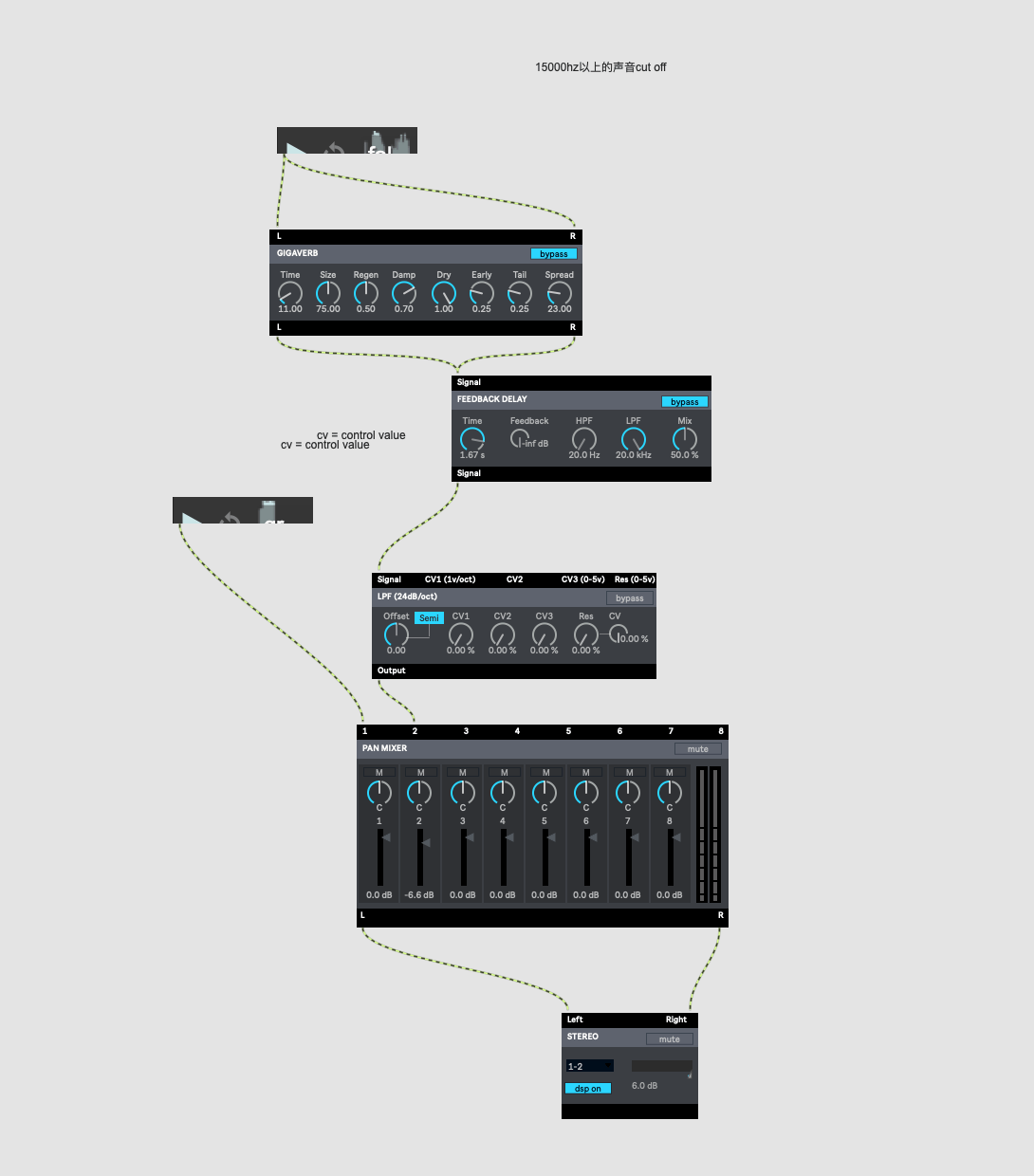
Performance
The performance generally went well and achieved what I envisioned before. I think my action to bring folk music to an unconventional venue for it, which are the night clubs, can facilitate more conversation about different kinds of music and ways to think about heritage.
However, I have to acknowledge the fact that I changed my mind one day before the performance and I skipped the rundown of my final patch, which greatly impacted my judgment of how was the overall experience. Next time, I have to give myself enough time to test on bigger screens and different audio configuration. I asked a bunch of people who were there at the performance. I got some positive feedback but I am afraid because they are my friends and acquaintance and didn’t have to be critical. However, the subtitles for English readers didn’t go super well, people said the projection contrast wasn’t enough to see the letters and some of the duration of words needed to be extended. Secondly, the audio filters could be better rehearsed and polished.
Conclusion
I really appreciated the chance to perform what I have learned in RAPS. I have never thought about making my music since I have no background in it. And my passion for it has been cultivated during this class. I wish and I want to learn more about music-making
And I never thought about doing live performances. When I heard people say that they almost cried after experiencing my performance, I consider it a success. This class made me rethink VJ, and I think it can be more cool, and more than “wallpapers,” but as an engaging way to tell powerful stories.
Works cited:
Menotti, Gabriel. edited by Ana Carvalho and Cornelia Lund. “Live Cinema”, THE AUDIOVISUAL BREAKTHROUGH.